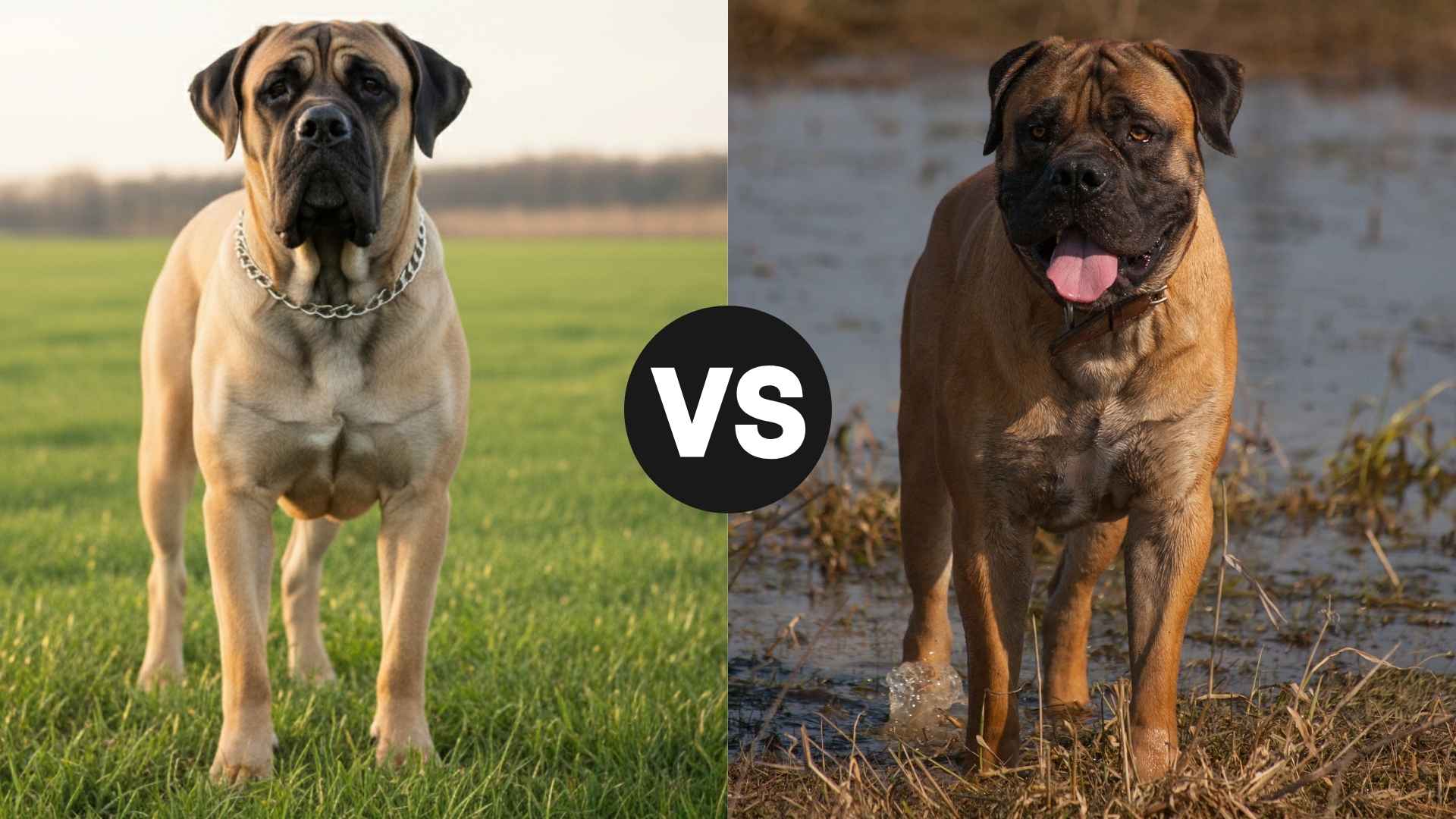If you are standing in a muddy barn doorway, coffee in hand, and wondering: “Mastiff vs. Boerboel, which is better for farms?”…. you are definitely thinking right about your farm. Both of these are big and powerful Mastiff-type dogs with long histories as guardians, and will be the best as farm dogs.
But… they are not carbon copies.
One has that slow-and steady, cuddly-giant vibe. The other is a no-nonsense farm protector bred for working life in Southern Africa. Which one matches your pasture, your kids, and your patience? Let’s find out!
(Yes, we will talk about poop schedules, puppy energy, and the all-important question: will it actually get along with the herd?) Stay with us till the end.
DID YOU KNOW?
According to the American Kennel Club (AKC), Boerboel dog breed literally gets it name from Afrikaans: boer (farmer) + boel (short for boelhond, bulldog). So yeah, that name kind of tells you everything. These dogs were farmer’s dogs, bred to guard farms across South Africa… their whole vibe is “I will keep the farm safe”.
Mastiff vs. Boerboel: Which Is Better for Farms?
Appearance Differences: Mastiff vs. Boerboel
Short answer: Both are massive dogs. But they wear that mass differently.
Mastiff (or the English Mastiff): Massive, broad head, loose skin, big bone structure. These dogs look like they were carved from soft oak. They are awe-inspiring but tend to carry themselves with a dignified and laid-back gait.
Boerboel (South African Mastiff): Also a large and muscular dog. But, more athletic in appearance, streamlined for movement across rugged farms. They have a shorter and denser coat and often a darker “black mask” on the face. The Boerboel puppies were developed as working dogs, so their looks scream “ready for work”.
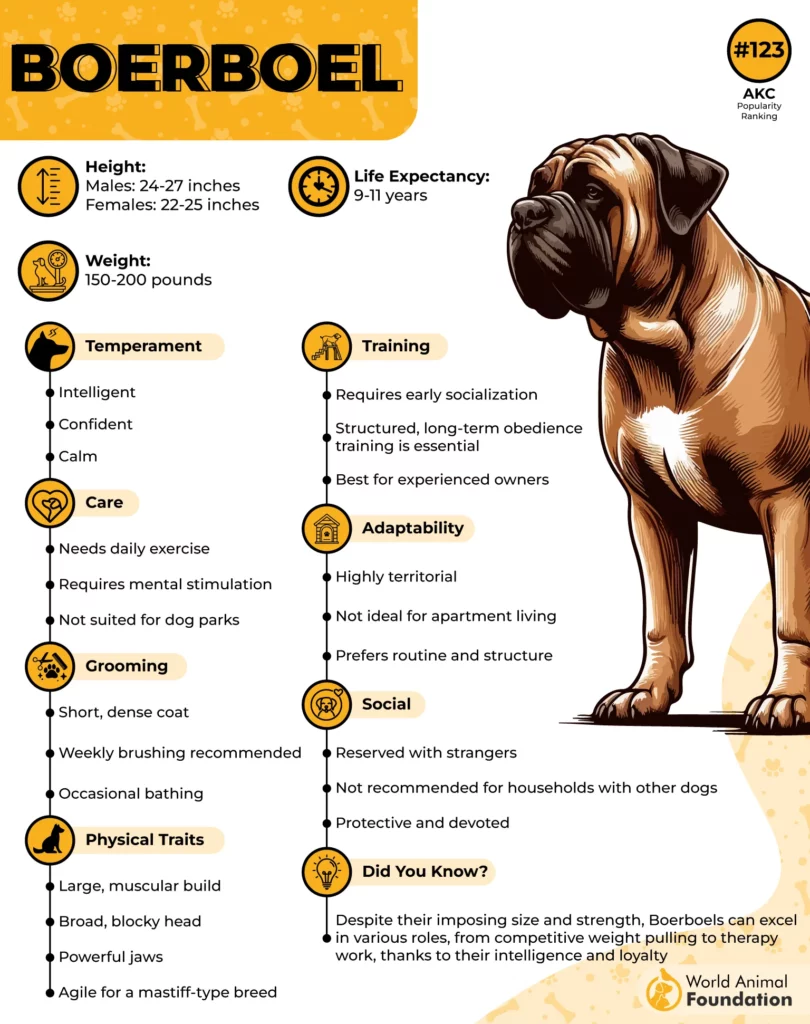
If you want a barn buddy that looks like a couch with paws – Mastiff.
If you want an imposing and athletic farm guard dog – Boerboel.
Temperament and Personality Traits
These two breeds share loyalty and protectiveness, but they wear different hats as different Mastiff-type dog breeds.
Mastiff temperament
Generally calm, dignified, and very tolerant with family members. They are often described as docile giants, good with kids when socialized properly, a real family pet that doubles as a protective deterrent.
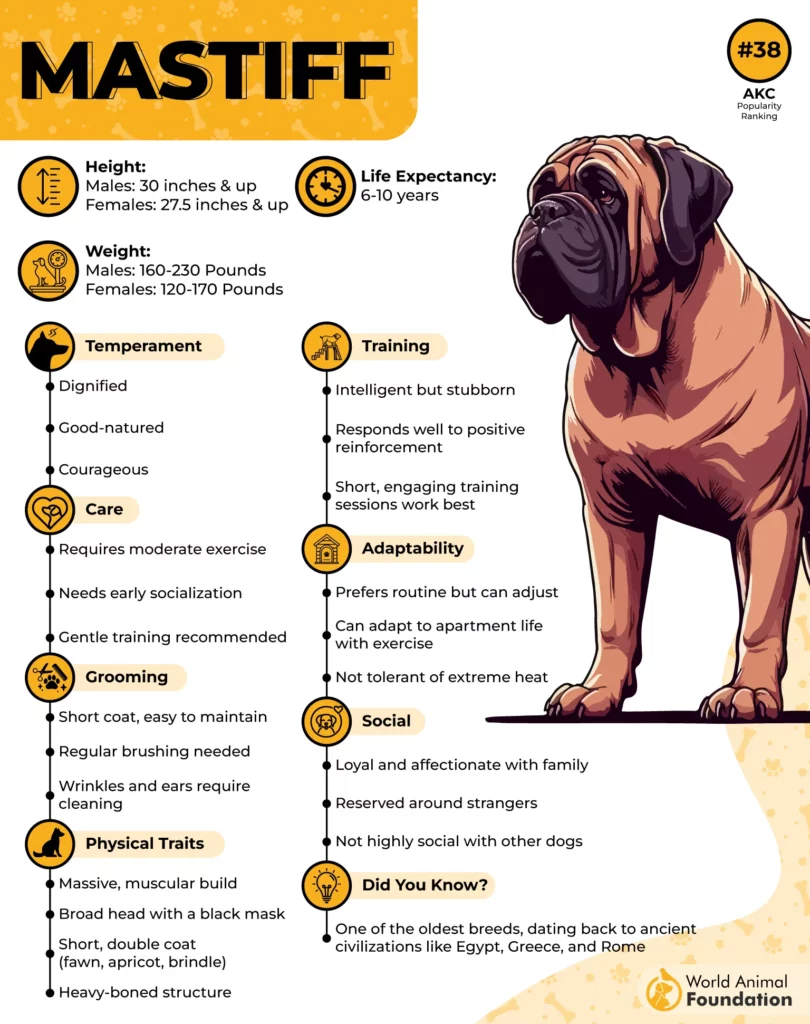
Boerboel temperament
Confident, territorial, and highly protective of family and property. They were bred specifically to guard homesteads in South Africa and can be more assertive with strangers and other dogs if they are not socialized properly. That intensity is what makes them excellent farm dogs, but it also means they need an owner who’s consistent and firm.
So….which fits your farm-personality?
Want a chilled family dog that also warns off trespassers? Mastiff.
Need a protective guard dog who will patrol the perimeter and mind the livestock? Boerboel.
HEADS UP!! Neither of these dog breeds is ideal for novice dog owners who want a low-effort pet. These are large-breed dogs with big personalities. They reward confident and informed handling.
Exercise Needs and Energy Levels
Another practical question: how much of your farmer self actually has to do with the dogs?
Mastiff: Moderate activity needs. As per PDSA, adult Mastiffs need only an hour of exercise daily. They enjoy daily walks and gentle play, but they are not an “active dog breed” in the sense of sprinting after a frisbee for hours. Over-exercising young Mastiff puppies can damage growth plates… so slow and steady wins the race during those first 18-24 months.
Boerboel: An active dog breed by design. They need regular exercise, mental stimulation, and work… You can think of patrols, scent work, or tasks around the farm, or just a lot of daily exercise. Bored Boerboel = boredom (and bored is not cute at this size). Plan for daily exercise and mental challenges
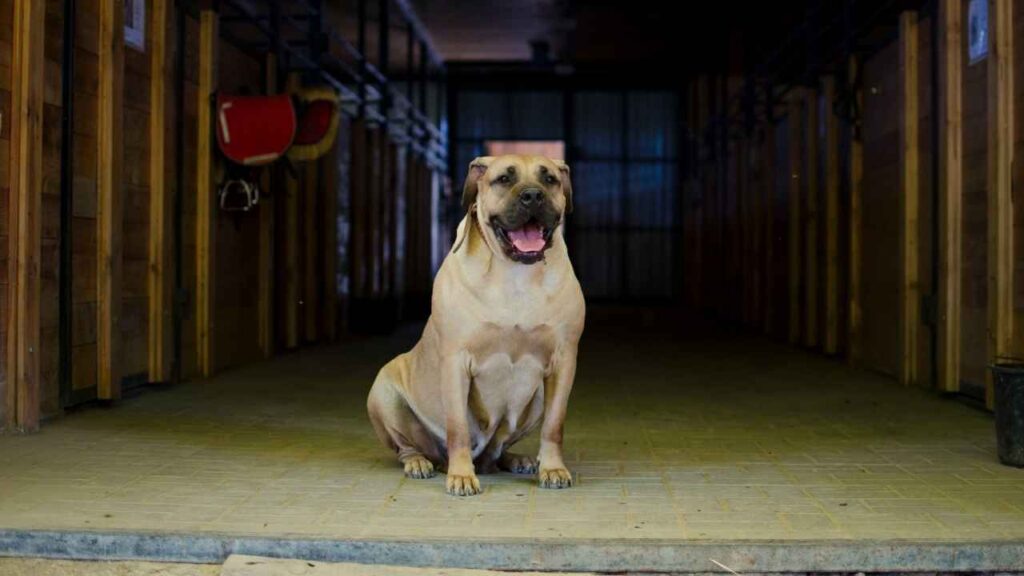
For farms that involve real walking, checking fence lines, and working with livestock, the Boerboel will match the job, energy-wise.
For quieter properties where the dog is mostly a guardian and family pet, Mastiffs’ lower energy and lazy vibes are a better fit.
Social Interaction and Behavior with Other Animals
Will they be friends with the barn cats? Will they chase the goats? Well… let’s be honest!
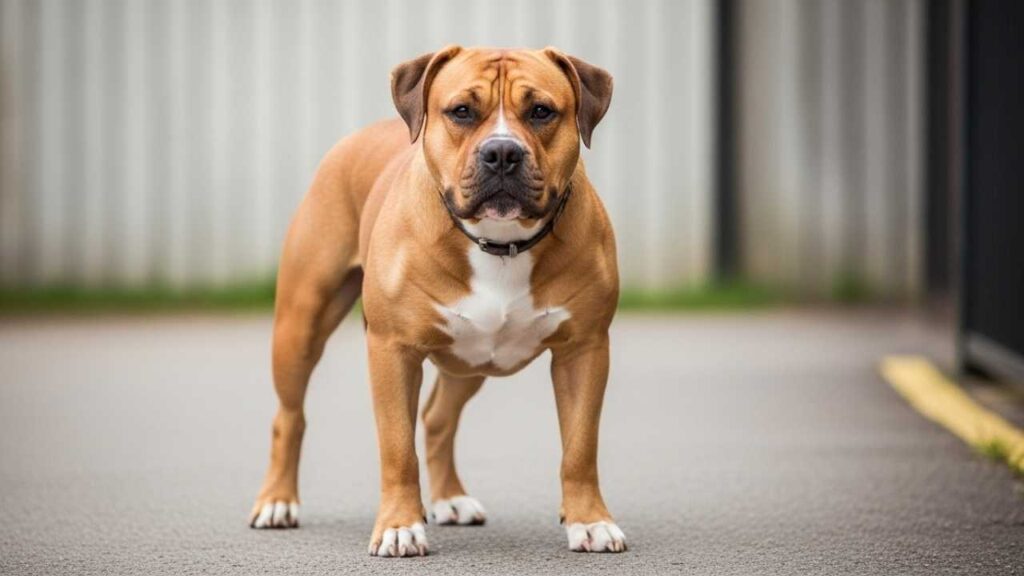
Mastiffs are usually pretty easygoing with other dog breeds and animals if introduced early. They can be OKAY with other dogs and smaller farm animals when raised together… again, early socialization is everything in breed differences.
Boerboels tend to be more assertive around other dogs and animals (they were developed to protect). WebMD reports that Boerboels can show aggressive tendencies unless taught otherwise… which is EXACTLY why early socialization and exposure to “other dogs” is non-negotiable.
If your farm is full of chickens, goats, horses, and a rotating cast of stray barn cats, expect to do controlled introductions and supervised interactions, but more so with Boerboel puppies. Some folks pair Boerboels with livestock only after careful training; they are working dogs, not automatic pet-sitters.
Coat Type, Grooming Needs, and Maintenance
GOOD NEWS! Both breeds are relatively low-maintenance breeds in the grooming department.
Mastiff coat
Short and straight. Sheds heavily in the shedding season. Three standard coat colors: fawn, apricot, and brindle. Weekly brushing is usually enough to keep loose hair under control. They do drool, have a thick tail, and their skin folds should be checked and cleaned regularly.
Boerboel coat
Short, dense, and sleek. They also shed, but generally have less loose hair than some other large dogs. They also require weekly brushing. Keeping nails trimmed regularly helps them look and feel sharp. Pay attention to the Boerboel’s ears; owners sometimes trim and check ears regularly to avoid infections (mostly after field work).
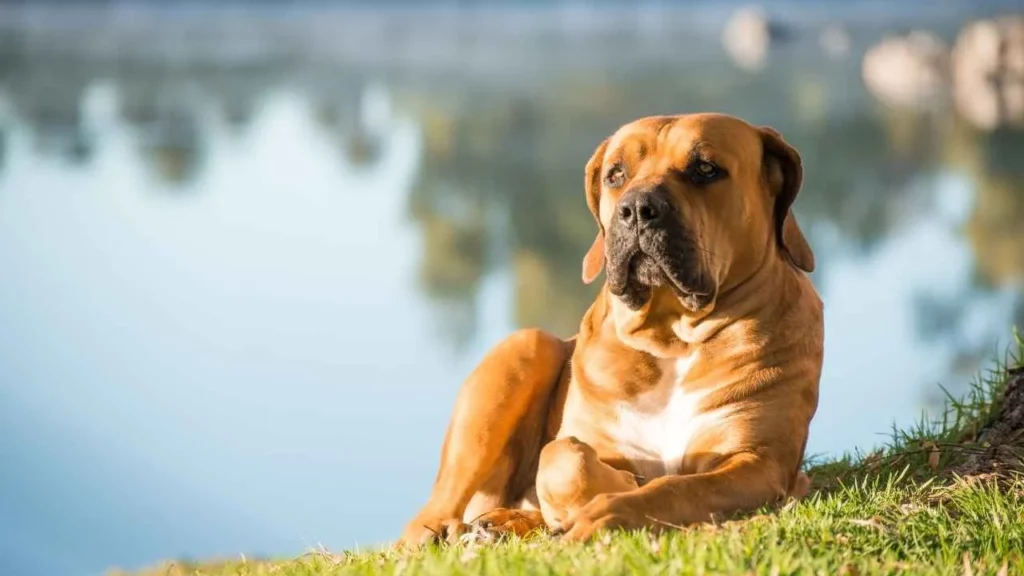
GROOMING CHECKLIST, DOG LOVERS!
Weekly brushing (both breeds) helps with loose hair and skin health issues.
Trim nails regularly.
Check ears and eyes after outdoor work.
Invest in high-quality dog food for large breed dogs to support joints and coat health.
Health, Lifespan, and Common Medical Concerns
REALITY CHECK TIME! Both are large breeds, and that comes with a predictable set of health watchwords.
Mastiff dogs have a life expectancy of 6-10 years.
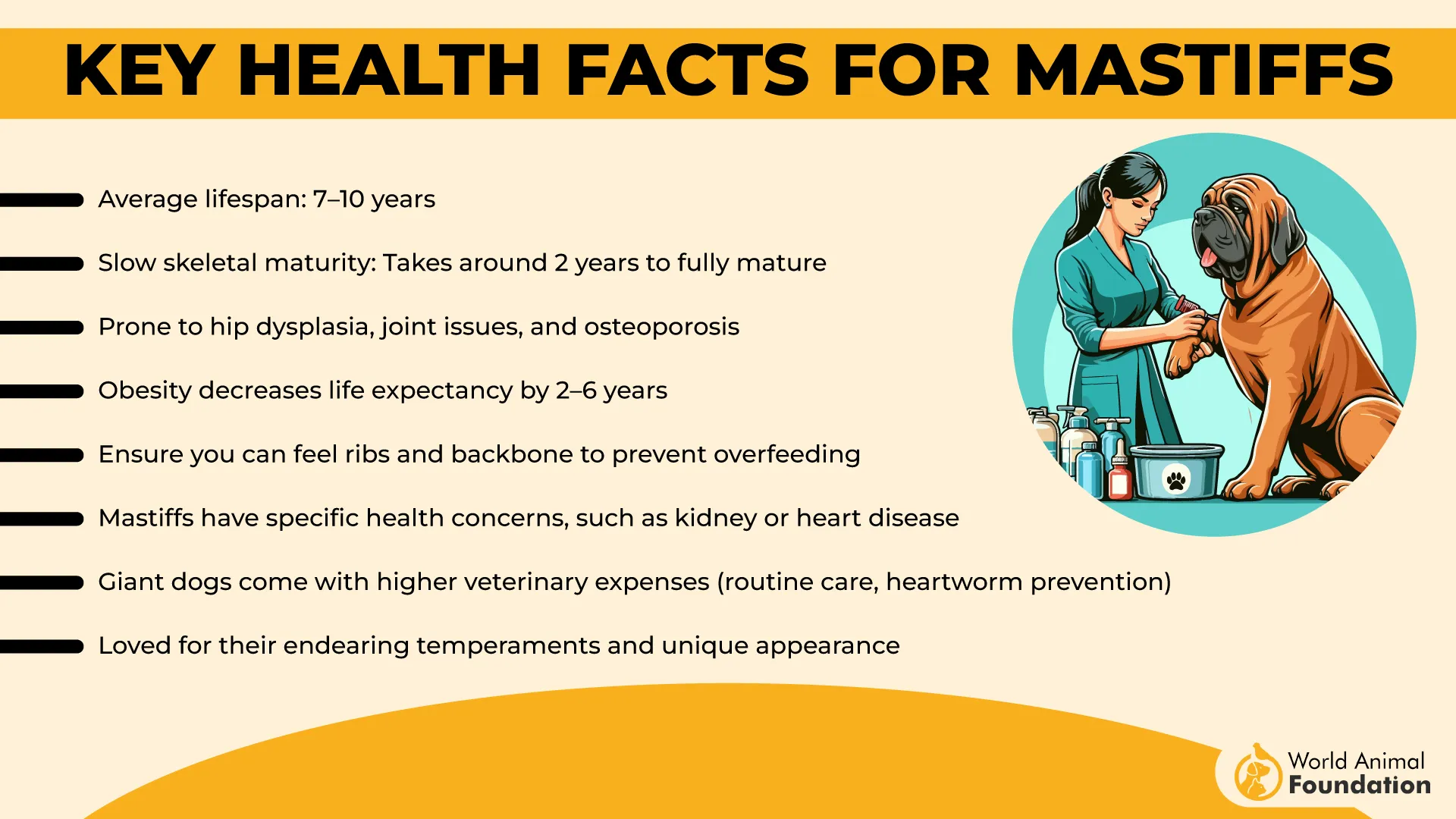
Boerboel dogs live up to 9-11 years.
You should screen for some common health conditions that might plague these dogs:
Hip Dysplasia and Elbow Dysplasia: Big dogs, big joint concerns. Responsible breeders will screen for hip and elbow dysplasia.
Bloat (Gastric Torsion): A serious concern in deep-chested large breeds. Know the symptoms and emergency plan.
Progressive Retinal Atrophy (PRA) and other breed-specific conditions can occur as breeders require health clearance, especially for rare breeds.
Got puppies? Young age growth needs to be managed carefully. Avoid overfeeding and too much high-impact exercise when the skeleton is developing. As breeders are concerned about the recommended calorie intake, a dog’s calorie consumption varies, but large-breed puppy formulas and vet guidance will be your friend here.
Conclusion
Mastiff vs. Boerboel: which is better for farms, them?
Short answer: It depends on your farm, your experience (are you a novice owner?), and your expectations.
Pick a Boerbeol if:
You run active property work, need a hands-on guardian, or have livestock that needs a vigilant protector.
You (or someone on the farm) are experienced with large and assertive dogs and can commit to daily exercise, training, and leadership.
You want a working dog… a true farmer’s dog by history or a fighting dog nature.
Pick a Mastiff if:
You want a calmer type dog, a dignified guardian who’s also a loving family pet, and less demanding energy-wise, and will love to go to the dog park.
You need a deterrent that’s more of a gentle and steady presence than a patrolling sentry.
Don’t pick any if you are a first-time dog owner.
Either way, go hug your pup (or plan for the type of pup that suits your place). If you are on Mastiff or Boerboel, you are getting a breed with loyalty stitched in their DNA. Just remember: massive love comes with massive responsibility. If your farm, heart, and property are all ready, either one could be a wonderful breed as the best farm dog. Spend time on training, though, to help them be independent dogs, which is best for guarding.
It just depends on how you want that love (and guarding) delivered.


